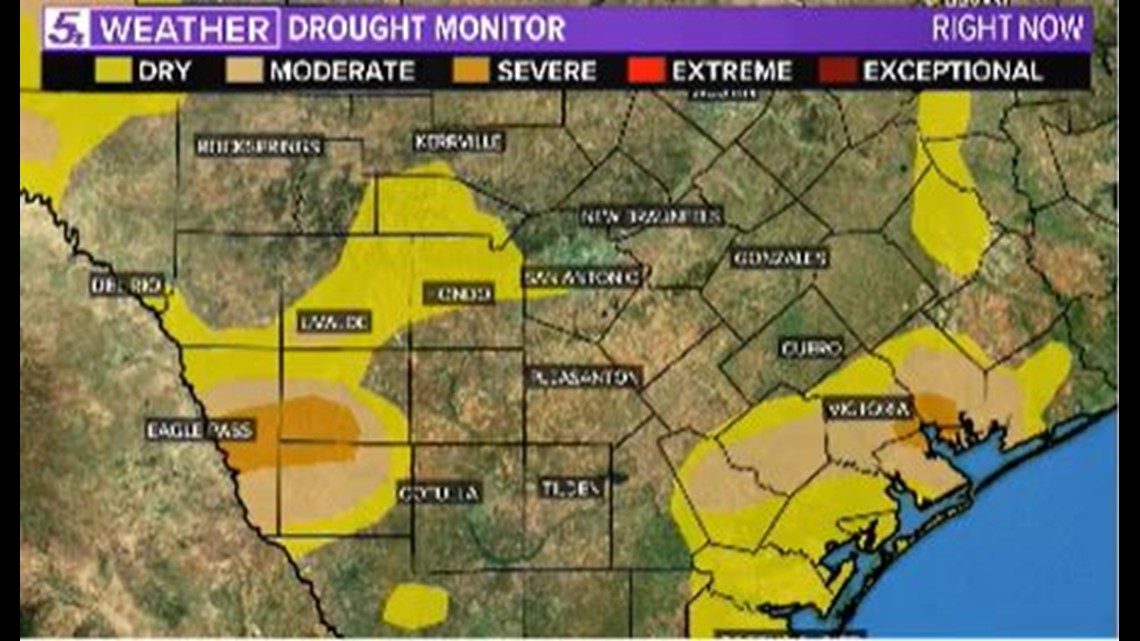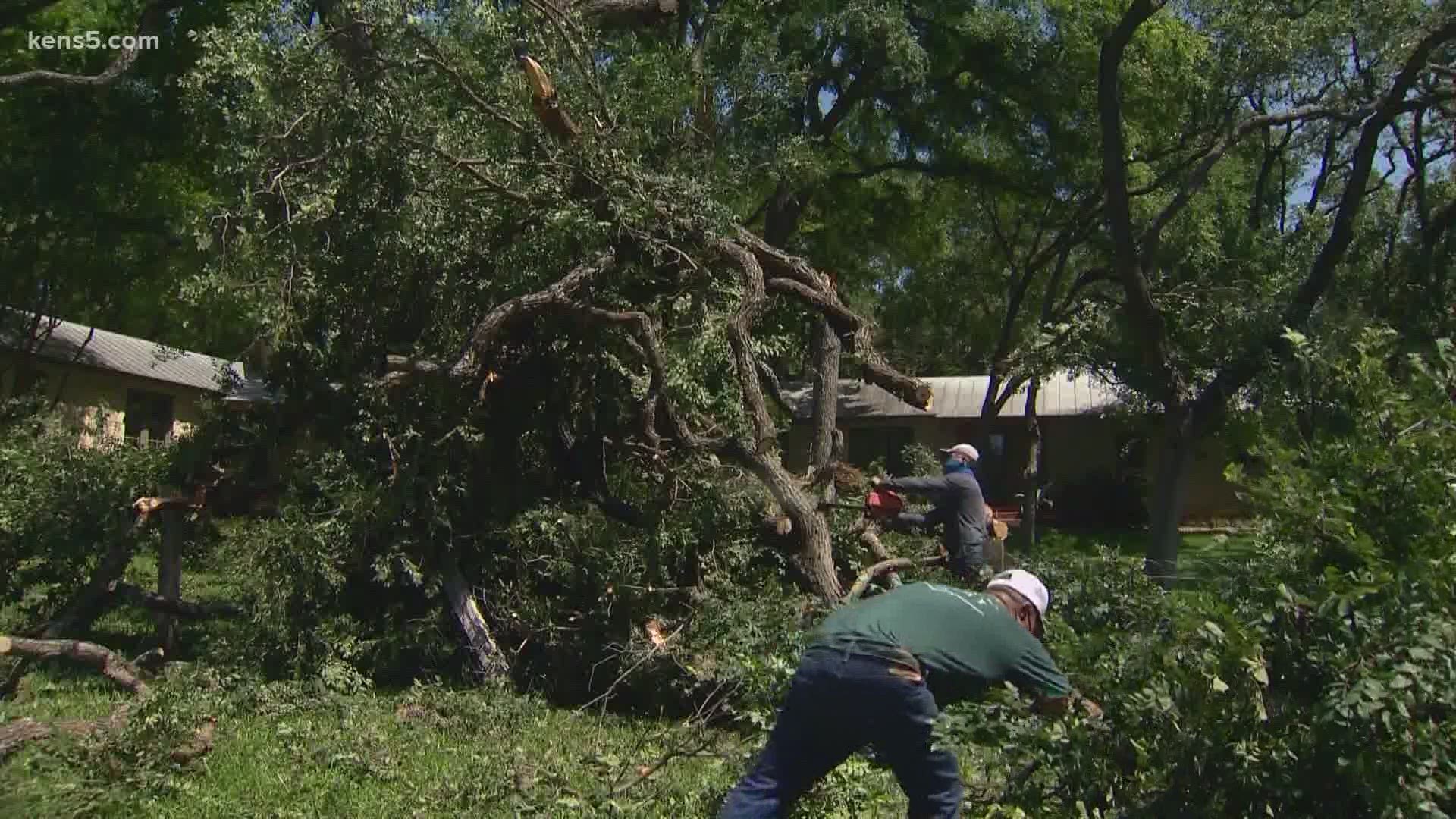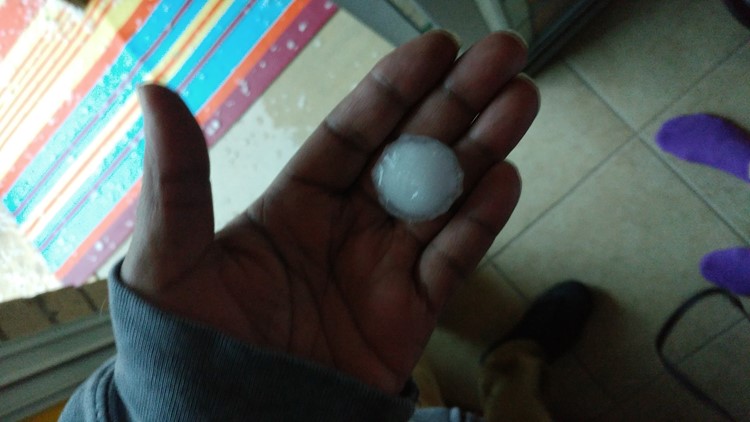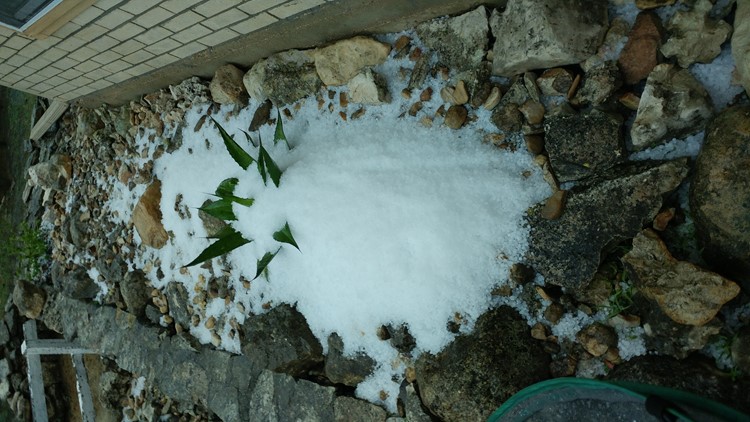SAN ANTONIO — The threat for severe weather in South Texas tonight has passed as the Severe Thunderstorm Watch for Bexar County and surrounding counties has been canceled as of 7:45 p.m. Thursday evening.
Severe storms moved through the county Thursday evening and into an area that has been battered with several days of rainy weather. Power outages continue to be an issue in the city. As of 10:45 p.m., CPS Energy is reporting 69 active power outages affecting 786 customers. Earlier Thursday evening, more than 12,000 San Antonians were without power.
Portions of south Texas were under a Tornado Warning Thursday afternoon. Golf-ball sized hail was reported in the Ingram area, while one #kens5eyewitness reported nearly 5 inches of rainfall today. The area is under a Flash Flood Warning until 8:30 p.m.
And take a look at some photos submitted through the KENS 5 app below and be sure to download our app for a quick, easy way to submit your photos.
#KENS5eyewitness photos from Thursday's thunderstorms
One good sign from all the severe weather throughout the last week -- much of South Texas' drought conditions have improved. San Antonio has seen 4.5" inches of rain this month; that's up more than an inch from normal. Since Saturday, 2.73" of rain has fallen in the city. For the year, San Antonio has received about a foot of rain.


SEVERE WEATHER 101
When severe weather threatens the area, it is important to know what risks a storm can bring and what you should do to stay safe.
One of the most important things to know is where you are located on a map, so when a watch or warning is put into place, you can identify if you are at risk. When the National Weather Service puts out warnings, they are county-based and sometimes include cities as well. It is important to know where you live in the county and that you can identify it on a map.
It is also important to know the difference between a watch and a warning. A watch means that conditions are favorable for something to happen, but a warning means that something has developed and it is important to take action.
So, what would cause a thunderstorm to be qualified as a "severe" thunderstorm?
Hail that is one inch large is also considered to be about the size of a quarter.
Another ingredient that would lead to a storm becoming severe is if winds are 58 mph or greater.
Winds at this strength could cause damage to roofs and could even cause trees to be knocked down.
Finally, if a tornado is present inside a thunderstorm it would qualify the storm as becoming severe.
In this instance, a tornado warning would be issued.
A tornado watch can be issued for an area if strong storms are expected, and if the storms bring the risk for tornadoes, but not all storms include the threat for tornadoes. The ingredients in the atmosphere for a tornado to form are not always there when storms are present.
If the area you are in is ever under a tornado warning, it is important to know where you should go inside your home.
Head to the lowest, interior room of your home. The basement would be best, but if you don't have one, head to the first floor of the home and get away from exterior walls, or walls that lead to the outside of the home.
It is also important to stay away from glass. The more walls you can put between you and the outside, the better.
While lightning can be frequent in storms and very dangerous, it does not lead to a storm being qualified as severe.
Remember, when thunder roars, go indoors.
Storms can also lead to flooding. Flooding may not cause a storm to be labeled as being severe, but it is the deadliest kind of weather.
South Texas is known to have major flood events every few years, so it is important to use caution and to always stay out of floodwaters. Remember, turn around, don't drown.
Entering flood water is very dangerous as you can be swept off of your feet and you don't know what could be in the water that could hurt you.
The best thing you can do to be ready for severe weather is know what you will do in the event it strikes where you live.
Make sure your family has a severe weather action plan.
Have a place everyone goes inside your home and keep supplies there, such as food, medication, batteries, and flashlights.
Weather Minds Classroom: Take a class in Severe Weather 101
Follow the KENS 5 Weather Team
Don't forget you can download the KENS 5 app for the latest news and weather information each day while you are on the go.













